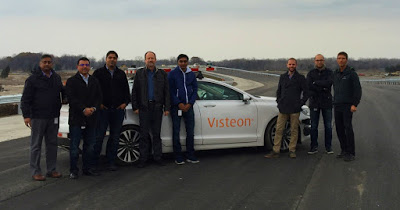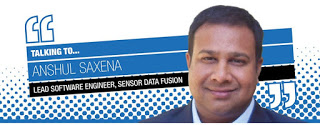By Upton Bowden, new technology management

But the real world has a way of deflating those expectations by populating cities and countrysides with potholes, confusing layers of repositioned lane markers, construction areas, broken-down vehicles, inconsistent entrance and exit ramps, and the occasional stray pedestrian chasing lost cargo.
The variety of situations that may confront an autonomous vehicle seems endless, but the automotive industry is tackling all of them, seeking to build algorithms that can manage any challenge that the vehicle encounters. To achieve this daunting goal, the algorithms and associated equipment must be tested in a realistic, flexible setting that can be monitored and controlled, so real highways and downtowns are not the best places to determine if an engineer’s latest software tweaks really do the job.
Fortunately, the Michigan Department of Transportation, the Michigan Economic Development Corporation, the University of Michigan, Business Leaders for Michigan and Ann Arbor SPARK have joined to create the American Center for Mobility (ACM), a full proving ground for vehicle-to-vehicle and vehicle-to-infrastructure testing, validation and education. The remarkable facility is under construction at the Willow Run site near Ypsilanti, Michigan, with its first phase opening on Dec. 11.
500 acres of tunnels, roundabouts and potholes
Visteon is delighted to be the first Tier 1 automotive supplier to become an ACM partner, investing $5 million in this nationally designated proving ground, one of only 10 across the United States. This world-class, non-profit facility is specifically designed for developing, testing and creating standards for autonomous vehicle software and hardware, with roadways that mimic real-life situations and the obstacles they can present.
Stretching across more than 500 acres, ACM preserves a mile-and-a-half portion of M-12, with its potholes and worn lane markings. It adds triple-decker overpasses, bridges and a 2.5-mile, high-speed loop. Workers also are constructing a 700-foot curved tunnel, two double overpasses, intersections, roundabouts and a complex pedestrian zone. It even will offer an urban canyon, with movable glass and steel walls that generate reflections and potentially block wireless signals.
Computer vision algorithms should not always look at brand-new pavement, so ACM has lines with older faded paint. Indeed, ACM can make lane markings disappear and add construction barrels or put debris on the road along with stalled vehicles.
At ACM, virtually any type of driving environment can be custom-designed for testing by the industry. We can test autonomous driving in a simulated rainstorm, where glare from the road can interfere with sensors. We can turn off the lights in a tunnel to imitate a power failure. We even can create a snowstorm without needing to wait for January in Michigan.
An ideal environment for perfecting DriveCore™ technology
Situated just seven miles from Visteon’s headquarters, ACM will serve as an ongoing base for perfecting Visteon’s DriveCore™ technology, an integrated autonomous driving controller providing a scalable, failsafe platform that Integrates advanced driver assistance systems through levels 3 and 4 of autonomous driving.
Visteon’s first autonomous vehicle will be on site for ACM’s Dec. 11 opening, so our autonomous team can test hardware, software, sensors—the entire setup—while controlling surrounding vehicles to reproduce an amazing variety of traffic situations.
ACM will be a great site for proving edge-use cases for computer vision in autonomous driving—those unusual situations that defy ideal conditions.
We are confident that ACM will help us more quickly validate the performance and safety of systems we are developing. Our proximity will be a huge advantage, as team members no longer will need to drive across the country to find certain test-case environments. Also, as a founding partner, Visteon can book the ACM facility in advance and permanently occupy a garage on the grounds.
We believe that this strategic investment in ACM will accelerate the development of our products and demonstrate our long-term commitment to autonomous driving systems, as well as our ability to move quickly to test edge-use cases.
The American Center for Mobility is an ideal, unique venue for making possible the safe validation and self-certification of connected and autonomous vehicle technology – helping ensure autonomous cars will perform reliably and safely on those unpredictable “real-world” roads and highways.
Upton Bowden oversees new technology management in the Chief Technology Office at Visteon. He is primarily focused on technology and approaches that enable autonomous driving and other next-generation mobility solutions. Bowden earned a B.S. degree in electrical engineering from the University of Michigan and an MBA from Wayne State University. He holds 14 automotive electronics patents and serves on the board of the Connected Vehicle Trade Association (CTVA).






